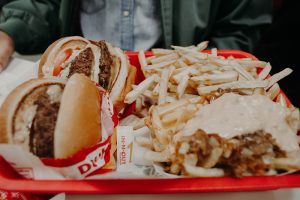Behind the Numbers: Why Referral Marketing Works
June 24, 2019
Have you ever sat down, letting out a sigh wondering what must be done to improve profits?
Somewhere along the way, you heard of referral marketing but tossed it aside as something that works for others, not you. Referral marketing has saved businesses from ruin. Others doubled their revenue.
This post will help you devise a referral marketing strategy that works. But, basics first:
Customer retention: Customer retention refers to initiatives and actions a company takes to retain as many customers as possible.
Customer acquisition: These are actions undertaken to attract new customers which may include the creation of new blog posts, marketing campaigns, and advertisements.
Logic dictates us to devote time and energy into client acquisition. A significant portion of marketing budgets in any business is dedicated to wooing fresh faces. However, it’s not cheap— getting new feet through your doors can cost seven times as much as retaining someone.
That’s not all.
Loyal customers would choose to buy from their favorite brand over any other, even if they face some difficulty doing so. Almost an equal number of customers as above would tell friends and family about a brand they’re loyal to. Studies show that 80 percent of your future profits will come from 20 percent of your existing customers.
Your current customers don’ t shy away from purchasing more. On average, they’re likely to spend 31% more than new customers. They’re also most likely to grab new product lines off shelves courtesy of their trust in you.
Everything we know on customer behavior points to customer retention as one of the best ROI generators for a business. You would think that with all these stats, brands would give an arm and a leg to keep existing customers.
However, businesses are predominantly biased towards acquisition.
The key to success is to acquire new customers without losing sight of the existing base. By improving retention you stand to benefit the most. Let’s look at some examples now.
In-N-Out’s rise to stardom

Customer referrals are what made In-N-Out Burgers a go-to travel destination in the west. The restaurant through its secret menu has executed one of the best possible word-of-mouth strategies.
The standard menu doesn’t differ much from what nearby restaurants offer. However, the secret menu’s reputation promises a novel culinary experience.
Regulars to In-N-Out inform newcomers about the secret menu which fuels interest— encouraging more patrons to come and check what the hubbub is about.
The popularity and patronage the establishment enjoys are fuelled by this small exchange.
How do I know this?
Because the touted secret menu isn’t a secret. It’s publicly available on their website.
Death Wish Coffee’s journey to success
It all began with Mike Brown’s fascination for the strongest cup of joe, a fascination his customers infected him with.
When running a brick and mortar cafe Mike was regularly accosted by customers looking for the strongest coffee. Seeing the demand he researched basics, followed it up with deeper market research and built a product based on customer feedback.
Preparation met success as praise streamed in for the concoction.
Popularity began spiraling after a feature on Good Morning America. The feature brought news coverage, blog coverage, TV intros and plentiful word of mouth traffic. Winning the Small business Big game challenge earned a free super bowl commercial spot which got even more people talking.
How do they continue to attract word-of-mouth

Over the years, Death Wish Coffee has built a large email subscriber base.
The idea once again came from customers. Customers wanted to be informed of new releases and announcements as soon as possible.
Subscribers are emailed with news about the company, announcements, product launches, best deals, and new collaborations. Specials announced once or twice a week are emailed promptly.
Now, there’s also a blog in place that helps rally the efforts further.
These content marketing efforts pay rich dividends, in brand advocates who attract other like-minded people. This earned trust comes partly from the great product and partly due to consistent engagement with the community.
DWS has 11 listed products on Amazon. They’re a top 500 seller on the platform and an equally big merchant on Shopify.
The company averages 10 million USD in annual sales. In addition to a large email-subscriber base, the brand boasts 40,800 followers on Twitter, 307,169 on Facebook, and 5,900 on Pinterest
Weaving in an emotional angle helped cultivate passionate product advocates. This is a proposition worth considering in your brand-building efforts.
Why?
Consumers who have an emotional connection with brands have a 306% higher lifetime value. Such customers stay with a brand for at least 5 years compared to 3.5 years for other customers. 71% of such consumers actively recommend these brands compared to others.
Coconut Bliss’s rise to fame
What lifted Coconut Bliss’s status from a homemade dessert maker to a million dollar brand were home tasting parties.
These parties were the fertile ground where attendees impressed with the superior taste of the product were motivated to spread the word.
Parties took root around the company’s hometown in Oregon. Encouraged with the initial success they began hosting such parties everywhere else.
Personal relationships forged as a result of such demonstrations eventually resulted in large numbers of brand advocates peppered throughout the country who demanded supermarkets to feature the product line.
As parties mushroomed, more and more stores started featuring the product. Second, they built a huge social media following from this initial fan base helping them consolidate an online presence attracting even more customers.
The brand sells over 2 million pints of ice-cream resulting in annual revenue of over 5 million USD. They have 17000 followers on Twitter, and 34500 followers on Facebook. Coconut Bliss has shed its humble beginnings to become a nationally recognized brand.
A quality product with good social media reach and customers is all that it took to build a product that does millions in revenue today.
Lessons to learn
Product worship is rooted in product excellence. It begins with the product. You don’t get die-hard fans with a mediocre product. Once you have that in place it’s only a matter of time before you get fans who can’t live without your product.
Within the customer-base, there’s an extremely passionate group of customers. They’re brand advocates who refer all their friends, who can’t stop talking about the brand and almost always are the ones responsible for the lion’s share of sales resulting from influencer marketing.
Nurture this select body of brand advocates than treating everyone equally. This is done by segmenting them and following up with gifts and freebies to foster the relationship. In turn, you’ll get even better results.
Concluding thoughts
Purchases are a proxy of the trust the customer places in you. Getting a new customer to a point where he’s paying you month-after-month is difficult. It takes time.
As such, nurturing existing clients returns a much better ROI. Customer acquisition is essential, but a wholesome strategy that devotes energies to acquisition, loyalty and retention is undeniably important.
—
About the author:
The marketing team at ReferralCandy and CandyBar, referral marketing and loyalty tools for online and offline businesses.





